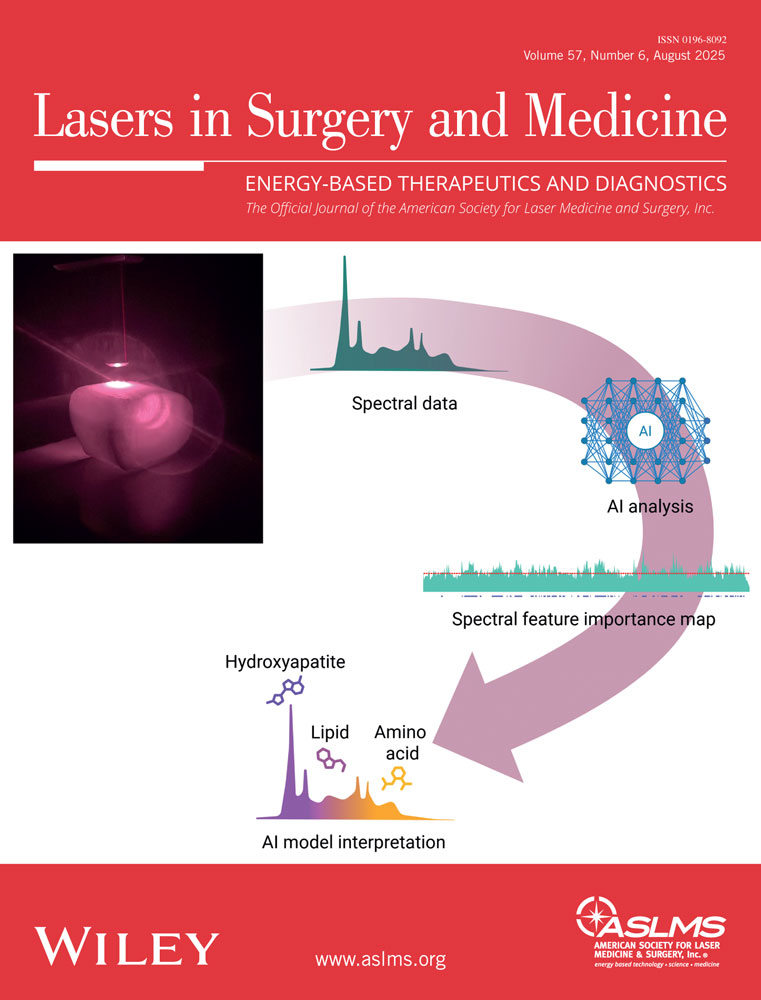Vascular response to laser photothermolysis as a function of pulse duration, vessel type, and diameter: Implications for port wine stain laser therapy
Abstract
Background and Objective
Treatment of port wine stains (PWS) by photothermolysis can be improved by optimizing laser parameters on an individual patient basis. We have studied the critical role of pulse duration (tp) on the treatment efficacy.
Study Design/Materials and Methods
The V-beam laser (Candela) allowed changing tp over user-specified discrete values between 1.5 and 40 milliseconds by delivering a series of 100 microsecond spikes. For the 1.5 and 3 millisecond pulses, three spikes were observed at intervals tp/2 and for tp ≥ 6 milliseconds, four spikes separated by tp/3. The ScleroPlus laser (Candela) has a smooth output over its fixed 1.5 milliseconds duration. Blood vessels in the chick chorioallantoic membrane (CAM) were irradiated at fixed wavelength (595 nm), spot size (7 mm), radiant exposure (15 Jcm−2), and at variable tp. The CAM contains an extensive microvascular network ranging from capillaries with diameter D < 30 μm to blood vessels of D ≈ 120 μm. The CAM assay allows real-time video documentation, and observation of blood flow in pre-capillary arterioles (A) and post-capillary venules (V). Vessel injury was graded from recorded videotapes. Mathematical modeling was developed to interpret results of vessel injury when varying tp and D. A modified thermal relaxation time was introduced to calculate vessel wall temperature following laser exposure.
Results
Arterioles. For increasing tp, overall damage was found to decrease. For fixed tp, damage decreased with vessel size. Venules. For all D, damage was smaller than for corresponding arterioles. There was no dependence of damage on tp. For given tp, no variation of damage with D was observed. Photothermolysis due to spiked (V-beam) vs. smooth (Scleroplus) delivery of laser energy at fixed tp (1.5 milliseconds), showed similar vessel injuries for al values of D (P>0.05).
Conclusions
The difference between initial arteriole and venule damage could be explained by the threefold higher absorption coefficient at 595 nm in (oxygen-poor!) arterioles. In human patients, PWS consist of ectatic venules (characterized by higher absorption), so that these considerations favor the use of 595-nm irradiation for laser photothermolysis. For optimal treatment of PWS it is proposed that tp be between 0.1 and 1.5 milliseconds. This is based on a modified relaxation time τd′, defined as the time required for heat conduction into the full thickness of the vessel wall, which is assumed to have a thickness ΔD ≈ 0.1D. The corresponding τd′ will be a factor of about six smaller than given in the literature. For vessels with D between 30 and 300 μm, τd′ ranges from 0.1 to 1.5 milliseconds. Lasers Surg. Med. 30:160–169, 2002. © 2002 Wiley-Liss, Inc.




